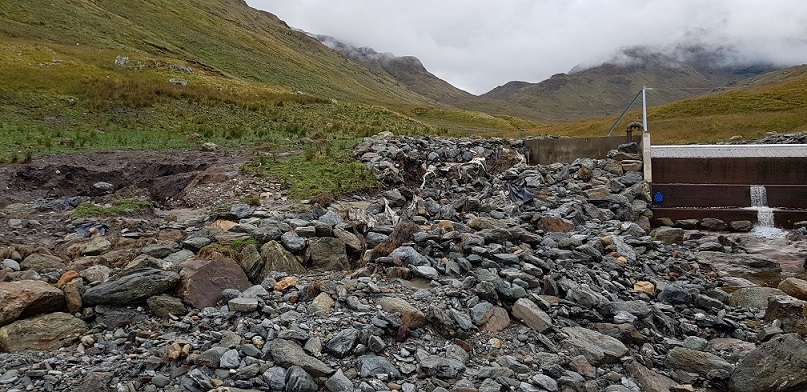
In my last post on Glen Falloch (see here) I considered the impact that the very heavy rainfall of 5th August had had on the hydro intake pools. I argued that the serious infilling and damage in some cases appears to be a fundamental design flaw which results from schemes being constructed in unsuitable places. As a consequence some are unlikely to be viable long-term unless turned into semi-permanent work sites and risk being abandoned completely becoming liabilities rather than assets in our attempts to combat global warming. This post looks at the impacts the flooding has had BELOW the intakes which has equally serious implications for the future of run of hydro schemes.

Compare the two photos above taken just four months apart. A large proportion of the rip-rap bouldering which had been placed against the dam wall to the left of the intake has been removed by the flood, along with much of the bouldering along the bank of the river below.

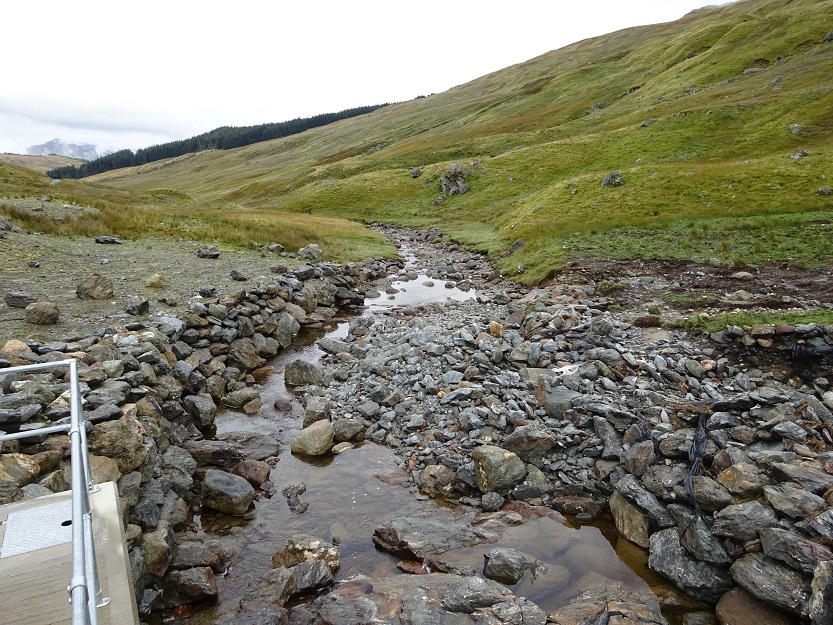
The force of the flood water to remove the rip rap boulderling must have been quite something. The boulders were placed here to protect the river bank after the construction of the intakes but have failed. And its not just on the Upper Falloch where this has happened, but on four of the other eight Glen Falloch intakes.
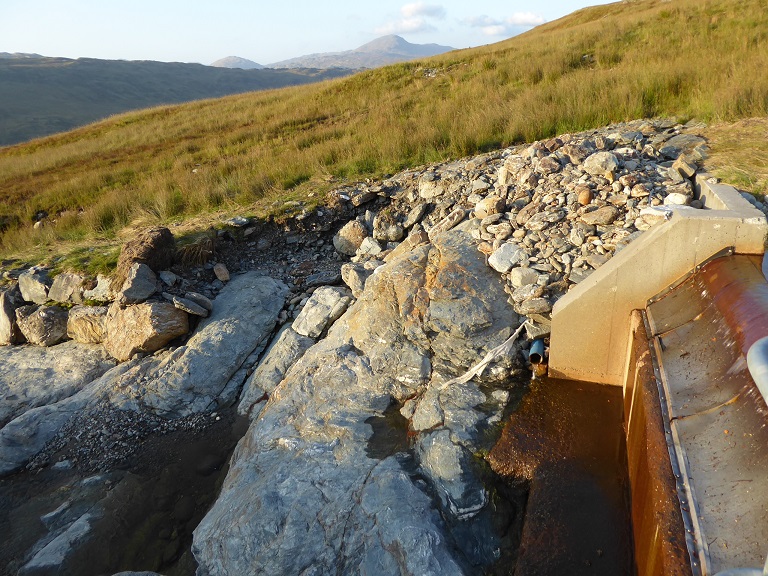

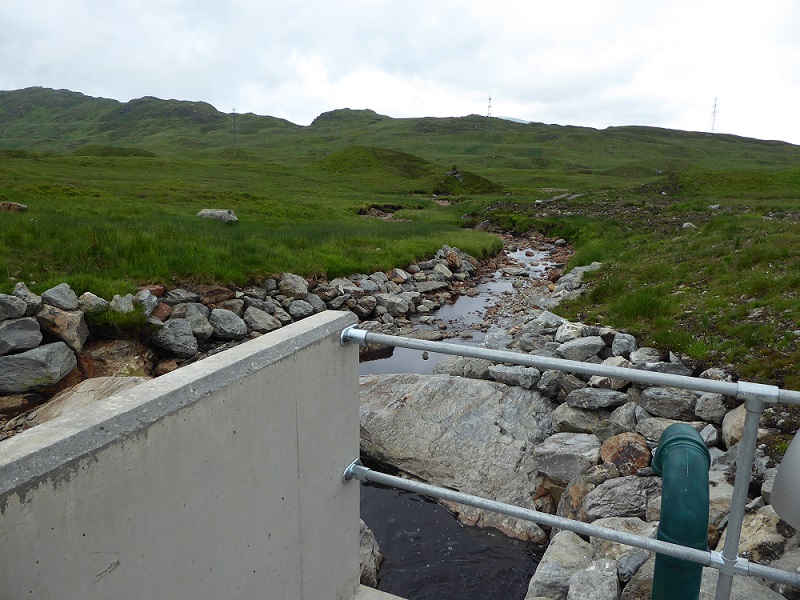
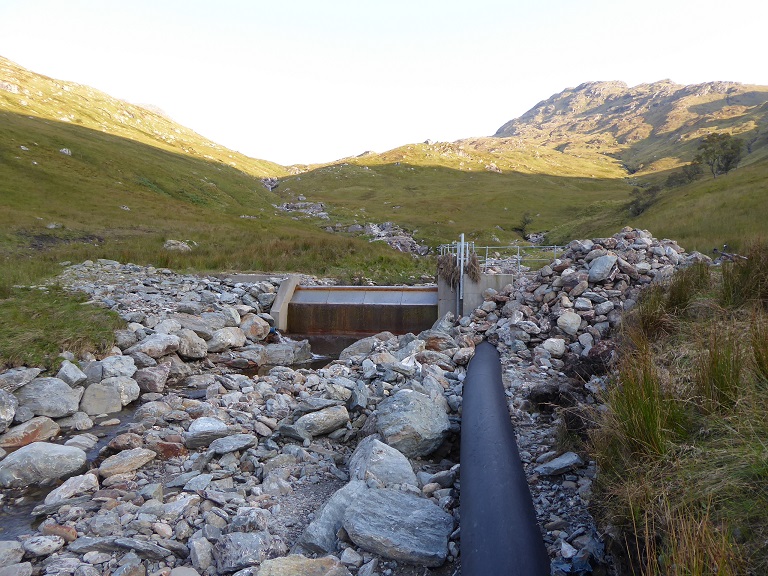
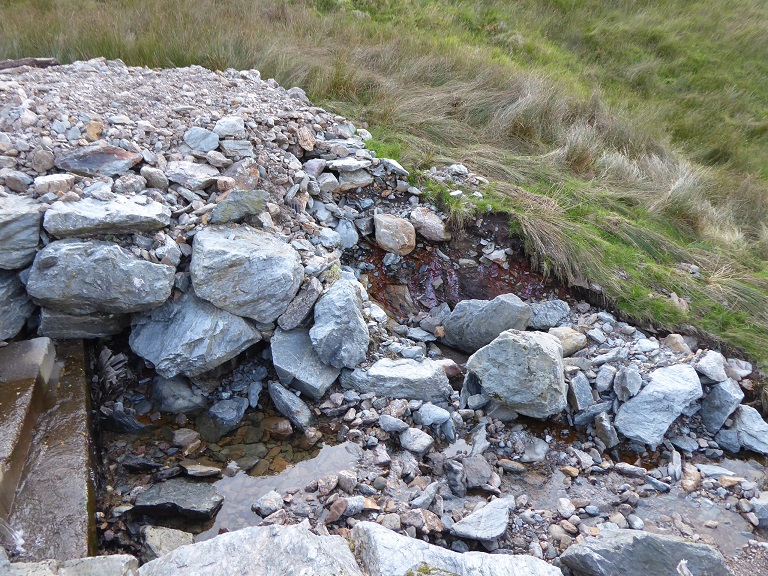
That’s five out of the nine Glen Falloch intakes where the restored banks below the intakes have been seriously damaged. In those that haven’t, a large part of the explanation appears to lie in where they have been located – between rock walls!
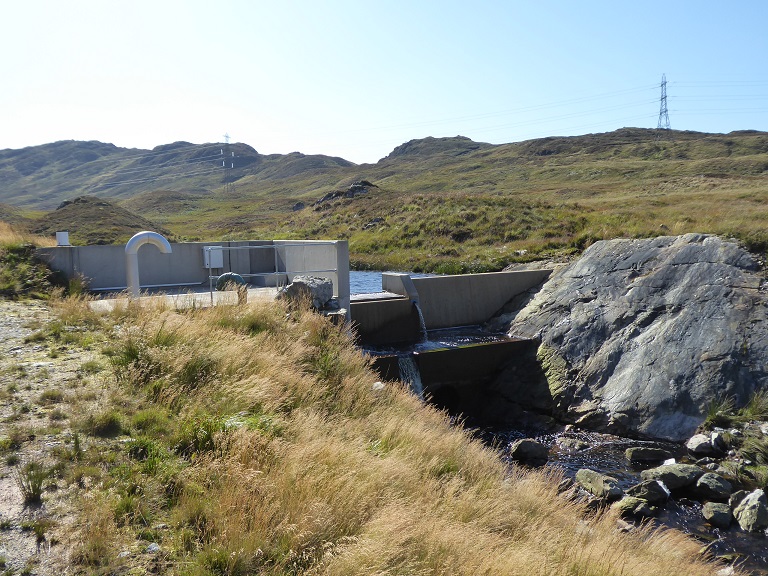
Three out of the four intakes with relatively undamaged banks appear to have survived the floods precisely because they did not make such extensive use of rip rap bouldering. What looks better appears to work better! In the final case, the third Allt a Chuillinn intake, the one that has not been working for over a year, its been so overrun by boulders from above that its hard to tell what’s happened.
While much less rip rap bouldering has generally been used ABOVE the hydro intakes, there is also evidence that where used it has been seriously damaged by the flood event:
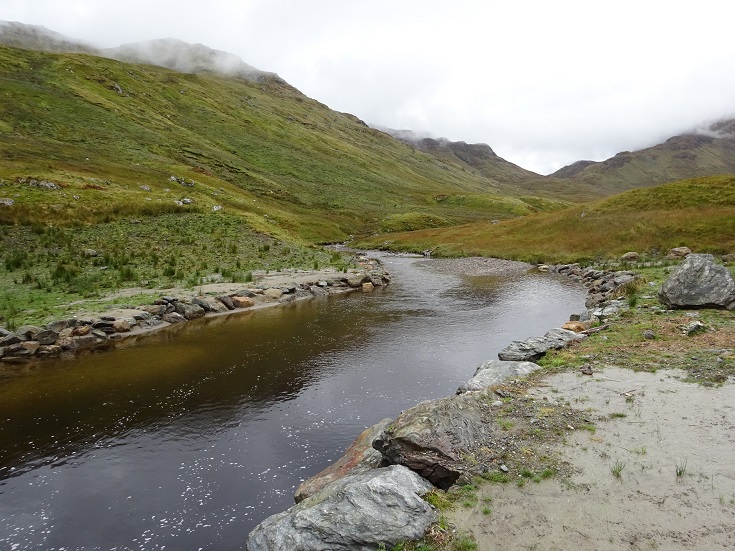
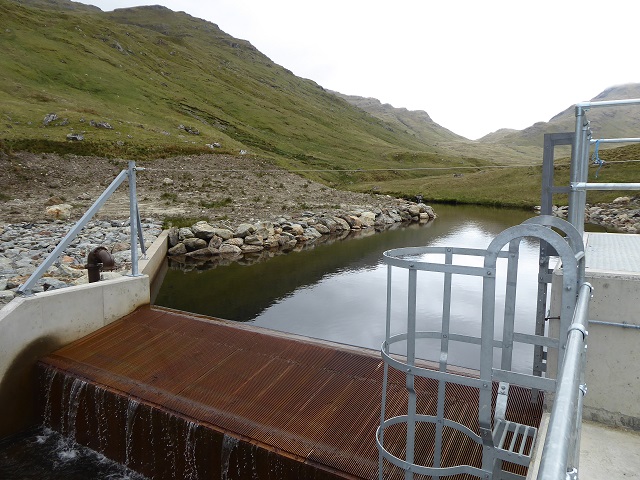
Besides the large amount of silt washed over the bank in the top photo – which could help it eventually revegetate and stabilise – many of the boulders visible in the earlier photo are no longer there and appear to have been washed away (I blew both photos up to compare them).
So what’s the problem?
Looking at the before and after, contrasting the artificial restoration work approved by the Loch Lomond and Trossachs National Park Authority with little regard to the landscape impact and what’s there now, part of me rejoices. Its nature at work, re-wilding if you like and testimony to human folly. It won’t be left, however, since there is money at stake.
The first problem is that nature at work will, sooner now maybe rather than later, change the course of many of these rivers leaving the hydro intakes high and dry. It, like the infilling, will turn them into liabilities not assets that could end up contributing to net global warming.
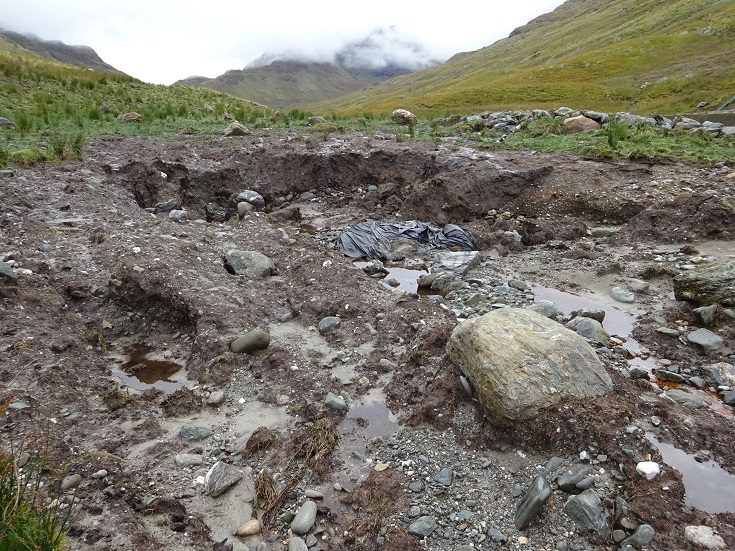
That then creates a second problem, how to restore these schemes if the original restoration techniques clearly haven’t worked? Does anyone know the answer? (I consider this more below).
The third problem is that large amounts of material, not just rocks but also sediment, have been washed down into the rivers below. During construction, the Scottish Environment Protection Agency required the contractors to take various measures to prevent silt entering watercourses. The combined effect of all those measures now appear to have been completely undermined by all the material that has now been washed down into the rivers through the banks that failed.
The fourth problem is that along with natural material – rocks, gravel, silt etc – a significant amount of plastic sheeting appears to have been washed into the river system.

You may have read about Scotland’s infertile pod of killer whales which scientists now believe have never reproduced due to the volume of plastic they have ingested from the sea. Well, we are doing the same to our lochs. In this case the Falloch flows down into Loch Lomond which is famed and specially protected for its fish, from powan to salmon. What impact will all this hydro plastic have on these species in the medium term? That’s another thing the Planning System, in its headlong rush to promote hydro, failed to consider. It needs to do so now before any approval is given to how these schemes might be restored and the Glen Falloch Estate should be starting with a comprehensive clean-up. Unfortunately I don’t expect the hyprocritical senior managers in the LLTNPA will come down nearly as hard as they have done on campers who cause far less damage to the natural environment.
I am not blaming the individual planners here, rather the system in Scotland as a whole which failed to consider what might happen to run of river hydro schemes if they were hit by the sort of flash storms which will become increasingly common with climate change. I cannot recall seeing a single Planning Application which considered these issues properly. After what’s happened in Glen Falloch, they can no longer be avoided.
What’s caused these problems?
In the same month the floods hit Glen Falloch, the Scottish Environment Protection Agency issued updated Good Practice Guidance on engineering for intakes and outfalls (see here). It contains just ONE single reference to the use of rip rap bouldering: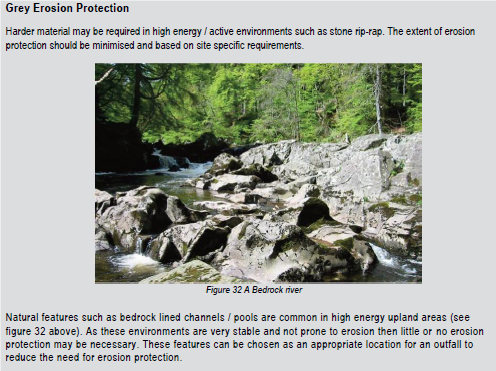
It was re-assuring to find SEPA confirming my observation that hydro intakes located between rock walls are far less liable to suffer damaging erosion. What they didn’t explain, however, is when, if ever, rip rap bouldering might be appropriate and if so how it should be designed.
The flood that has done so much damage to the engineered areas around the upper Falloch intake, has done relatively little damage to the river banks lower down:
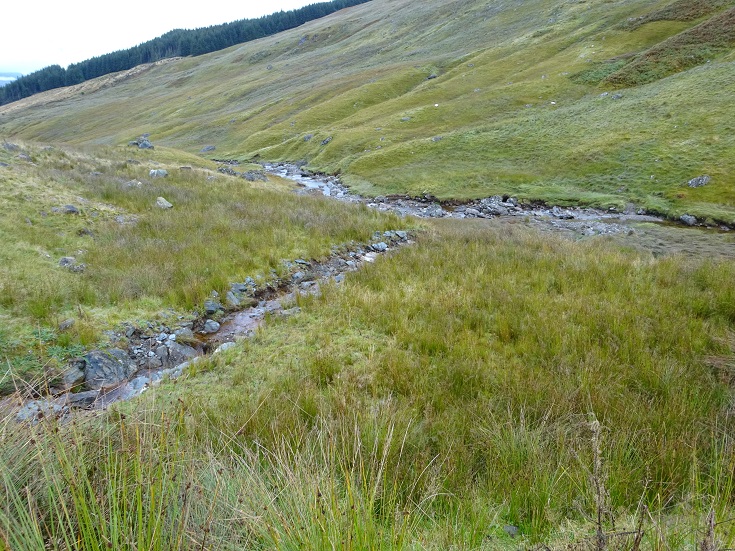
Kevin McGrath and I have visited all the Glen Falloch intakes over the last two weeks and this observation appears true for all the rivers. There is some damage of course, some of it quite striking, but its nothing like the extent of the damage that has been done to the engineered banks. Perhaps 5% of the natural river banks have failed compared to 50% of the banks restored by humans! We need to understand why but clearly we interfere with nature at our peril.
Whatever happened to the precautionary principle in the headlong rush for hydro?

As the SEPA guidance explains the force of the water below hydro intakes is increased, a consequence of the way intakes affect the flow.
While I have no expertise in water dynamics, its not difficult to imagine why these floods might have affected the rip rap bouldering more than the natural banks. While natural banks deflect water flow, flood water enters and is forced between the rip rap boulders and starts prising them away from each other. It only needs one boulder to be dislodged and then the rest start to collapse.
The problem appears, however, to have been made considerably worse by use of plastic sheeting:
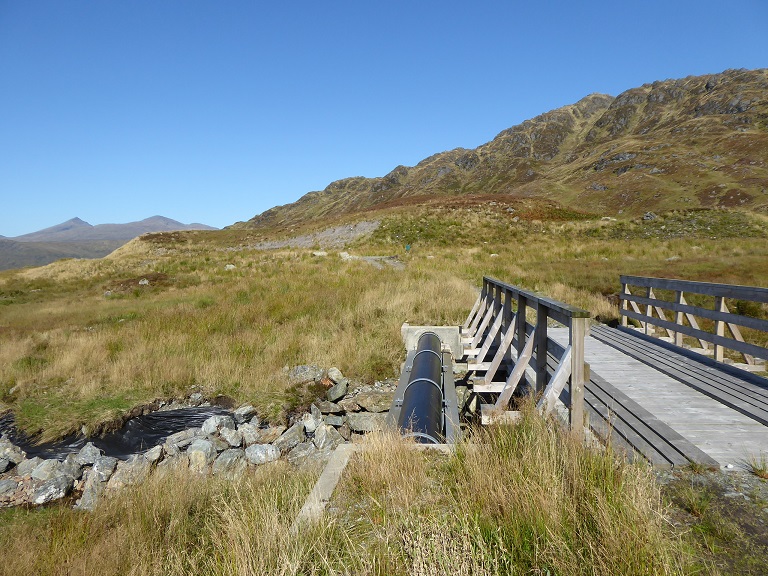
At first glance I thought, how ugly! Then I realised the top of the bank has been swept away. The problem is as soon as water gets between whatever is on the surface and the sheeting, its much easier for whatever is on the surface, whether boulders or turf, to get swept away.

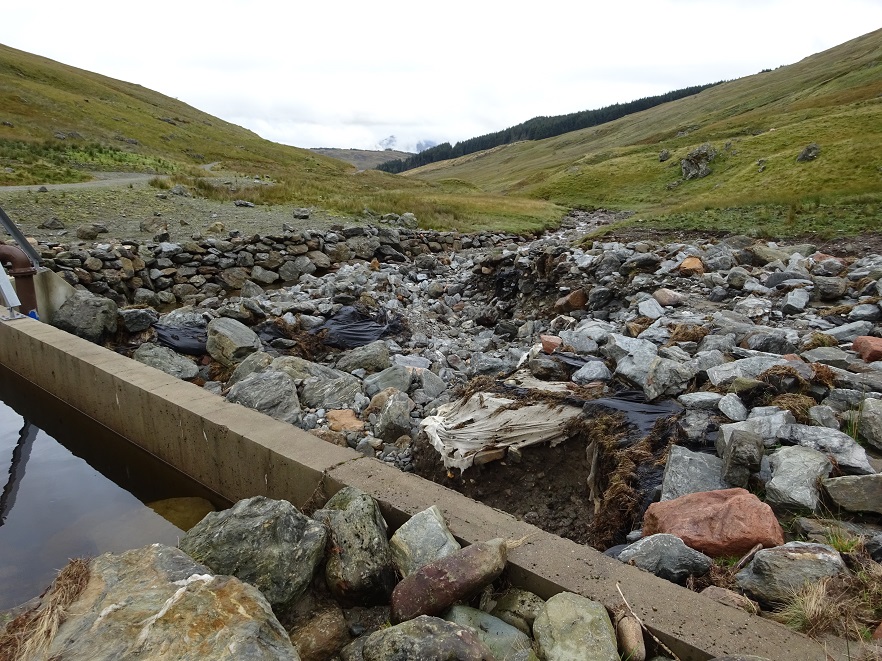
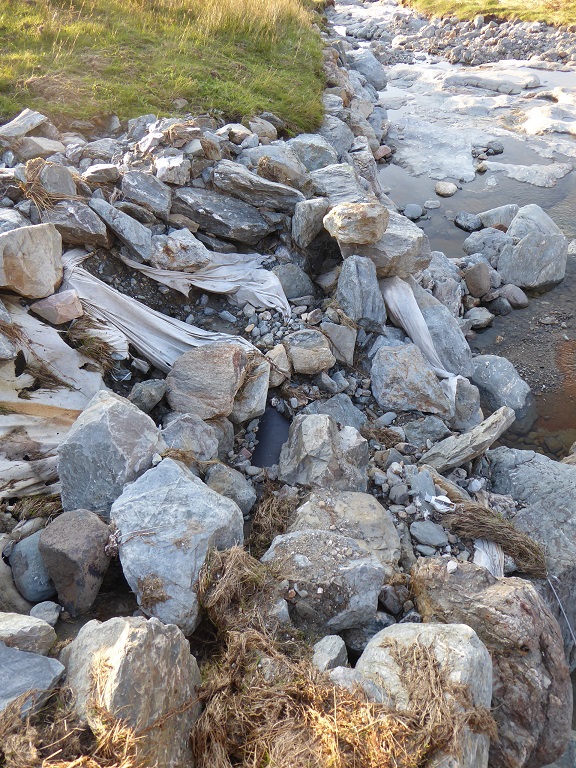
This is not, however, just a problem about plastic sheeting. Water forced through the boulders by the flood then collides and bounces off the intake pipes which form an erosion surface. I don’t think its coincidence that two different sections of intake pipe have been revealed by the flood event in Glen Falloch. It appears from the photo above that even permeable membranes may facilitate erosion of material placed on them.
Perhaps its time to put a moratorium on any plastic sheeting being used to line the ground as part of the restoration of hydro schemes? Whether that will address the whole problem, however, is another question. What wouldn’t be acceptable is a solution that involves embedding the boulders in concrete.
What needs to be done?
I don’t blame front line Planning staff or staff from SEPA for failing to anticipate these problems. They are under constant pressure to approve developments and, even if they have time to think about the consequences, have little power to do anything about them. The failures lie higher up and with the landowners and developers who have promoted run of river hydro schemes as environmentally friendly projects without any proper consideration of the consequences. After the destruction caused by the storm of 5th August in Glen Falloch, practice needs to change radically.
I would like to see the LLTNPA join me in calling on the Scottish Government and SEPA to investigate what has gone wrong, the implications and the potential solutions. Meantime, however, I would like to see SEPA issuing interim advice on the design of hydro schemes still in the pipeline (their August Guidance is unfortunately no longer any use in this respect) and what Planning Authorities and Developers need to do when schemes fail.
In my next post on Glen Falloch I will consider the impact of the rainfall on the new tracks up to the hydro schemes.
Rember a guy called Canute? That was back in the 10th century and we have not learnt anything. There is no stopping the power of nature, a fact that is being proved over and over. There are only two ways that could be tried to stop the damage as shown above. Either would be unacceptable but (1) is to concrete the boulders into place and for some distance upstream to stop erosion behind them, and (2) steel piles driven into the ground to form an inpenetrable barrier. As I have said both are unacceptable. The answer, either proper dams, build them in solid rock gorges or don’t build them at all. I look forward to your post on the tracks!